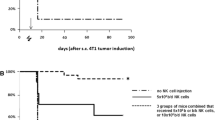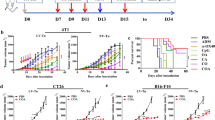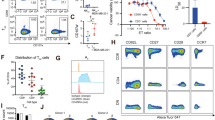Abstract
Metastatic breast cancer is currently incurable despite initial responsiveness, assumingly due to the presence of chemoresistant subpopulations that can be characterized as label retaining cells (LRC). In the 4T1 mouse breast cancer model, we previously achieved cure after Cyclophosphamide and Total Body Irradiation (CY + TBI) followed by haploidentical bone marrow and spleen transplantation (BMSPLT). CY + TBI without transplantation induced only transient impaired tumor growth indicating a critical role of donor immune cells. As it remained unknown if the 4T1 model resembles human disease with respect to the presence of subpopulations of chemoresistant LRC, we now demonstrate this is indeed the case. Chemoresistance of 4T1 LRC was demonstrated by in vitro co-incubation of fluorescently labeled 4T1 cells in limiting dilution with cyclophosphamide, doxorubicin or cisplatinum, after which only LRC containing colonies remained. LRC also remain in vivo after treatment with CY + TBI. Succeeding experiments set up to identify the haploidentical effector cell responsible for cure and, therefore, for the elimination of chemoresistant LRC designate donor NK cells crucial for the anti-tumor effect. NK cell depletion of the haploidentical graft fully abrogated the anti-tumor effect. Increased disease-free survival retained after transplantation of haploidentical bone marrow and NK cell-enriched spleen cell grafts, even in the absence of donor T-cells or of donor bone marrow. Tumor growth analysis indicates the anti-tumor effect being immediate (days). Based on these data, it is worthwhile to explore alloreactive adoptive NK cell therapy as consolidation for patients with metastasized breast cancer.



Similar content being viewed by others
References
Nieto Y, Shpall EJ (2009) High-dose chemotherapy for high-risk primary and metastatic breast cancer: is another look warranted? Curr Opin Oncol 21(2):150–157
Dean M, Fojo T, Bates S (2005) Tumour stem cells and drug resistance. Nat Rev 5(4):275–284
Al-Hajj M, Wicha MS, Benito-Hernandez A, Morrison SJ, Clarke MF (2003) Prospective identification of tumorigenic breast cancer cells. PNAS 100(7):3983–3988
Ginestier C, Hur MH, Charafe-Jauffret E, Monville F, Dutcher J, Brown M, Jacquemier J, Viens P, Kleer CG, Liu S et al (2007) ALDH1 is a marker of normal and malignant human mammary stem cells and a predictor of poor clinical outcome. Cell Stem Cell 1(5):555–567
Fillmore CM, Kuperwasser C (2008) Human breast cancer cell lines contain stem-like cells that self-renew, give rise to phenotypically diverse progeny and survive chemotherapy. Breast Cancer Res 10(2):R25
Cheung AM, Wan TS, Leung JC, Chan LY, Huang H, Kwong YL, Liang R, Leung AY (2007) Aldehyde dehydrogenase activity in leukemic blasts defines a subgroup of acute myeloid leukemia with adverse prognosis and superior NOD/SCID engrafting potential. Leukemia 21(7):1423–1430
Ran D, Schubert M, Pietsch L, Taubert I, Wuchter P, Eckstein V, Bruckner T, Zoeller M, Ho AD (2009) Aldehyde dehydrogenase activity among primary leukemia cells is associated with stem cell features and correlates with adverse clinical outcomes. Exp Hematol 37(12):1423–1434
Koreth J, Schlenk R, Kopecky KJ, Honda S, Sierra J, Djulbegovic BJ, Wadleigh M, DeAngelo DJ, Stone RM, Sakamaki H et al (2009) Allogeneic stem cell transplantation for acute myeloid leukemia in first complete remission: systematic review and meta-analysis of prospective clinical trials. JAMA 301(22):2349–2361
Cornelissen JJ, van Putten WL, Verdonck LF, Theobald M, Jacky E, Daenen SM, van Marwijk Kooy M, Wijermans P, Schouten H, Huijgens PC et al (2007) Results of a HOVON/SAKK donor versus no-donor analysis of myeloablative HLA-identical sibling stem cell transplantation in first remission acute myeloid leukemia in young and middle-aged adults: benefits for whom? Blood 109(9):3658–3666
Suciu S, Mandelli F, de Witte T, Zittoun R, Gallo E, Labar B, De Rosa G, Belhabri A, Giustolisi R, Delarue R et al (2003) Allogeneic compared with autologous stem cell transplantation in the treatment of patients younger than 46 years with acute myeloid leukemia (AML) in first complete remission (CR1): an intention-to-treat analysis of the EORTC/GIMEMAAML-10 trial. Blood 102(4):1232–1240
Ueno NT, Rizzo JD, Demirer T, Cheng YC, Hegenbart U, Zhang MJ, Bregni M, Carella A, Blaise D, Bashey A et al (2008) Allogeneic hematopoietic cell transplantation for metastatic breast cancer. Bone Marrow Transpl 41(6):537–545
Ruggeri L, Mancusi A, Capanni M, Urbani E, Carotti A, Aloisi T, Stern M, Pende D, Perruccio K, Burchielli E et al (2007) Donor natural killer cell allorecognition of missing self in haploidentical hematopoietic transplantation for acute myeloid leukemia: challenging its predictive value. Blood 110(1):433–440
Stern M, Ruggeri L, Mancusi A, Bernardo ME, de Angelis C, Bucher C, Locatelli F, Aversa F, Velardi A (2008) Survival after T cell-depleted haploidentical stem cell transplantation is improved using the mother as donor. Blood 112(7):2990–2995
Karre K, Ljunggren HG, Piontek G, Kiessling R (1986) Selective rejection of H-2-deficient lymphoma variants suggests alternative immune defence strategy. Nature 319(6055):675–678
Ruggeri L, Capanni M, Urbani E, Perruccio K, Shlomchik WD, Tosti A, Posati S, Rogaia D, Frassoni F, Aversa F et al (2002) Effectiveness of donor natural killer cell alloreactivity in mismatched hematopoietic transplants. Science 295(5562):2097–2100
Vanclee A, van Gelder M, Schouten HC, Bos GM (2006) Graft-versus-tumor effects on murine mammary carcinoma in a model of nonmyeloablative haploidentical stem cell transplantation. Bone Marrow Transpl 37(11):1043–1049
Krishnamurthy K, Wang G, Rokhfeld D, Bieberich E (2008) Deoxycholate promotes survival of breast cancer cells by reducing the level of pro-apoptotic ceramide. Breast Cancer Res 10(6):R106
Dexter DL, Kowalski HM, Blazar BA, Fligiel Z, Vogel R, Heppner GH (1978) Heterogeneity of tumor cells from a single mouse mammary tumor. Cancer Res 38(10):3174–3181
Efferth T, Konkimalla VB, Wang YF, Sauerbrey A, Meinhardt S, Zintl F, Mattern J, Volm M (2008) Prediction of broad spectrum resistance of tumors towards anticancer drugs. Clin Cancer Res 14(8):2405–2412
Westerhuis G, Maas WG, Willemze R, Toes RE, Fibbe WE (2005) Long-term mixed chimerism after immunologic conditioning and MHC-mismatched stem-cell transplantation is dependent on NK-cell tolerance. Blood 106(6):2215–2220
Vanclee A (2006) A new model of haploidentical stem cell transplantation as a cure for malignancies in mice. Produced by Datawyse, University Press Maastricht, ISBN 10: 90-5278-568-6 and ISBN 13: 978-90-5277-568-4
Vanclee A, Lutgens LC, Oving EB, Deutz NE, Gijbels MJ, Schouten HC, Bos GM (2005) Keratinocyte growth factor ameliorates acute graft-versus-host disease in a novel nonmyeloablative haploidentical transplantation model. Bone Marrow Transpl 36(10):907–915
Elliott JM, Wahle JA, Yokoyama WM (2010) MHC class I-deficient natural killer cells acquire a licensed phenotype after transfer into an MHC class I-sufficient environment. J Exp Med 207(10):2073–2079
Joncker NT, Shifrin N, Delebecque F, Raulet DH (2010) Mature natural killer cells reset their responsiveness when exposed to an altered MHC environment. J Exp Med 207(10):2065–2072
Miller JS, Soignier Y, Panoskaltsis-Mortari A, McNearney SA, Yun GH, Fautsch SK, McKenna D, Le C, Defor TE, Burns LJ et al (2005) Successful adoptive transfer and in vivo expansion of human haploidentical NK cells in patients with cancer. Blood 105(8):3051–3057
Prigozhina TB, Gurevitch O, Morecki S, Yakovlev E, Elkin G, Slavin S (2002) Nonmyeloablative allogeneic bone marrow transplantation as immunotherapy for hematologic malignancies and metastatic solid tumors in preclinical models. Exp Hematol 30(1):89–96
Panigrahi S, Morecki S, Yacovlev E, Gelfand Y, Kassir J, Slavin S (2004) A novel approach for prevention of lethal GVHD by selective elimination of alloreactive donor lymphocytes prior to stem cell transplantation. Exp Hematol 32(8):756–764
Fleskens AJ, Lalisang RI, Bos GM, van Gelder M, Jansen RL, Schouten HC (2010) HLA-matched allo-SCT after reduced intensity conditioning with fludarabine/CY in patients with metastatic breast cancer. Bone Marrow Transpl 45(3):464–467
Aslakson CJ, Miller FR (1992) Selective events in the metastatic process defined by analysis of the sequential dissemination of subpopulations of a mouse mammary tumor. Cancer Res 52:1399–1405
Danna EA, Sinha P, Gilbert M, Clements VK, Pulaski BA, Ostrand-Rosenberg S (2004) Surgical removal of primary tumor reverses tumor-induced immunosuppression despite the presence of metastatic disease. Cancer Res 64(6):2205–2211
Morecki S, Yacovlev E, Diab A, Slavin S (1998) Allogeneic cell therapy for a murine mammary carcinoma. Cancer Res 58(17):3891–3895
Morecki S, Yacovlev E, Gelfand Y, Vilensky A, Slavin S (2004) Allogeneic versus syngeneic killer splenocytes as effector cells for the induction of graft-versus-tumor effect. Biol Blood Marrow Transpl 10(1):40–48
Hamby K, Trexler A, Pearson TC, Larsen CP, Rigby MR, Kean LS (2007) NK cells rapidly reject allogeneic bone marrow in the spleen through a perforin- and Ly49D-dependent, but NKG2D-independent mechanism. Am J Transpl 7(8):1884–1896
Kean LS, Hamby K, Koehn B, Lee E, Coley S, Stempora L, Adams AB, Heiss E, Pearson TC, Larsen CP (2006) NK cells mediate costimulation blockade-resistant rejection of allogeneic stem cells during nonmyeloablative transplantation. Am J Transpl 6(2):292–304
Re F, Staudacher C, Zamai L, Vecchio V, Bregni M (2006) Killer cell Ig-like receptors ligand-mismatched, alloreactive natural killer cells lyse primary solid tumors. Cancer 107(3):640–648
Acknowledgments
We express our gratitude to Dr. Wilfred T. Germeraad and Dr. Joris Vanderlocht for fruitful critical discussions, and Ans Houben for performing micro-PET imaging. This research was funded by the Stichting Vanderes, Breda, The Netherlands. This work was supported by the Vanderes Foundation, grant number 191.
Conflict of interest
None.
Author information
Authors and Affiliations
Corresponding author
Electronic supplementary material
Below is the link to the electronic supplementary material.
Rights and permissions
About this article
Cite this article
Frings, P.W.H., Van Elssen, C.H.M.J., Wieten, L. et al. Elimination of the chemotherapy resistant subpopulation of 4T1 mouse breast cancer by haploidentical NK cells cures the vast majority of mice. Breast Cancer Res Treat 130, 773–781 (2011). https://doi.org/10.1007/s10549-011-1355-z
Received:
Accepted:
Published:
Issue Date:
DOI: https://doi.org/10.1007/s10549-011-1355-z




